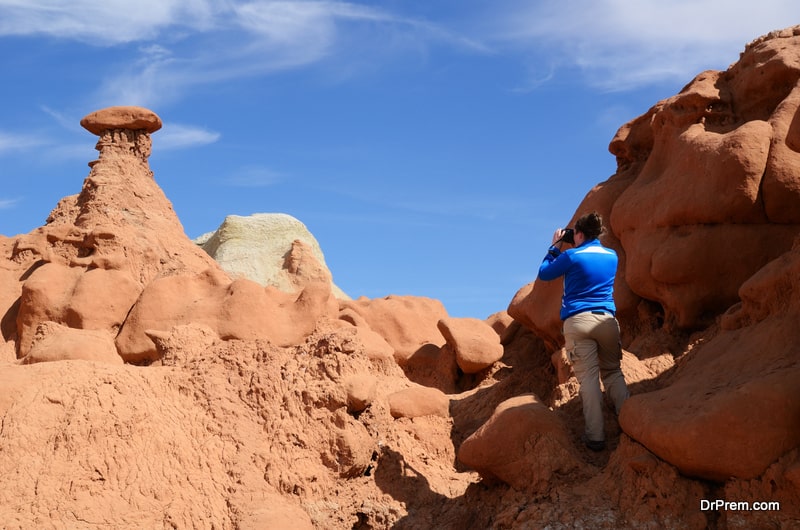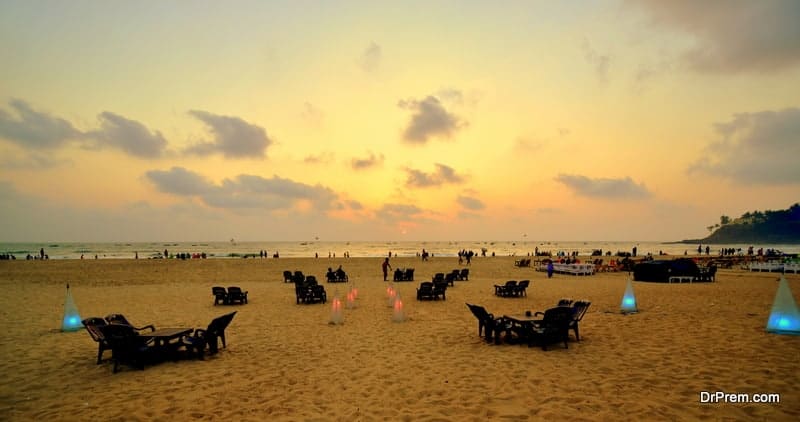Tourism and photography are intertwined with each other past a considerable span of span of time. The tourist has realized both photography and tourism are complementary to each other, and there is a long history over the years backing up such a relationship.
It was his instinctive passion that has driven tourist down the ages from ancient times to capture the image of the places with all its beauty and magic that he had travelled. Drawing, sketching and painting used to be the medium of expressing his appreciation and passion for preserving the images of nature, until serious thought was given to invent a machine, which could capture permanent images of the beauteous nature enabling him to preserve those for a long time.
The guide details you about the following:
Complete Guide to Photography Tourism by Dr Prem- History, Essential Components, Dos and don’ts and Destinations
-
History of photography tourism
-
Is photography tourism for you?
-
Essential components of photography tourism
-
Key drivers of photography tourism
-
Importance of planning in photographic tourism
-
Preparations before going for photography tourism
-
Implementation of best practices in photography tourism
-
Precautions in photography tourism
-
Dos and don’ts of photography tourism
-
Top destinations for photography tourism
-
Iceland
-
British Isles
-
China
-
Banff
-
Peru
-
Morocco
-
Pyrenees
-
Bolivia
-
Tasmania
-
Yosemite
History of photography tourism
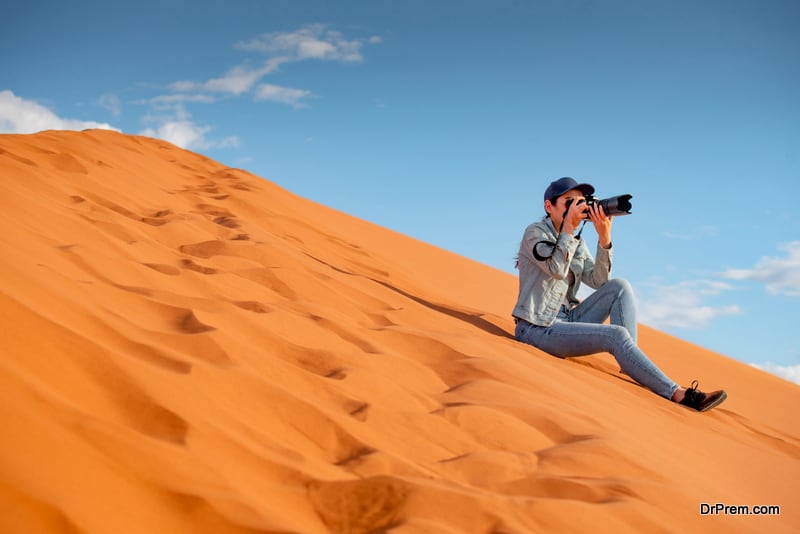
The realization came quite long back among tourists that it was important to put the world on a global exhibit thus widening the horizon of tourist view on a collective scale. The Eskimos inhabiting the ice capped polar land masses did not have the least idea of the existence of scorchers setting the Sahara on flame at 50 degrees Celsius.
Neither the sand dunes nor mirages ever appeared in his visual experiences or imagination. The Dayaks dwelling in the depths of Borneo equatorial rain forests did not have the least idea of the modernity and glowing gimmicks that had hit Tokyo or Seattle for that matter.
On similar grounds, men dwelling in the concrete jungles dotted with high rises and supermarket malls could never imagine the pattern of lifestyle and rituals existing among the tribes living in Congo or Amazon basin and the primitive green setting with towering tree trunks and thick foliage blocking off the sun offering a perfect backdrop.
Not till the advent of photography had taken the world like a storm. This powerful visual media had set the world of tourism burning with ardent passion and a strong desire to set out on a venture and explore the world around. Early records reveal that the tourists had been fascinated by the captivating photography. The spirit of adventure in him had been fired. The man who preferred to stay within the confines of his residence had become a globetrotter.
The wonders of photography have bridged the gap of information between people staying in different parts the world. As the time flowed, photography and tourism made firm connections. Camera Obscura and Claude glasses saw a gradual evolution. The world of photography received a support from advancements in science and technology, and sophisticated cameras and digicams are now ruling the world of photography and tourism.
The mechanism operates on the fundamentals of human desire bordering the artistic side of man. Recording the landscape and nature of a distant land on a visit and preserving and putting them for public display is a basic yearning sustained in the depths of human mind. It is here where photography walks in bonding the desire to visit a distant land and the desire to record the scenic beauties through photography.
Is photography tourism for you?
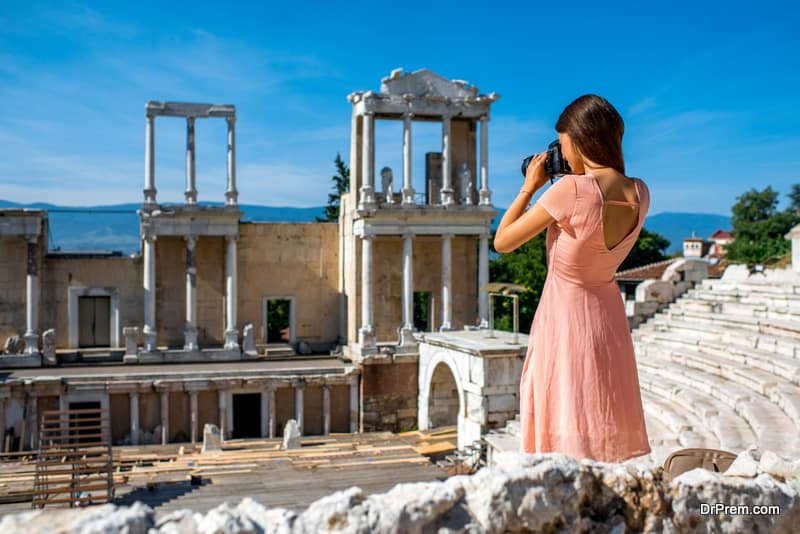
Photography and tourism are inseparable. Tourism without photos of the tour destinations taken is a half completed activity. Photography in tourism appeals to every tourist. There is no fun in a visit to a place without keeping a record of all the wonderful things you had been through while on a tour. No other form of record is as pleasing as the one that has a visual desirability, and photography fits the description exactly as does a ball into a socket.
Photography tourism is not a restricted arena but is for all having an aesthetic sense and an eye of appreciation. All you need is a decent camera, a stock of films or memory chips if you prefer a digicam.
Nature reveals herself in many forms and beauties across the globe forcing us step outdoors to enjoy and appreciate the variety. We have icy polar caps as we move up the latitudes with huge flats of frozen ice mirroring the blue sky.
A breath-taking beauty epitomized. You cannot bring in back home a chunk of the ice, a feel of the freezing cold, the sparkling rays of the setting sun slithering along the ice fields. Neither can you bring with you a few exotic samples of the fauna like a baby penguin, but you can certainly carry home the brilliant photography of these wonderful creations of nature. It greatly helps in reliving the memories of your amazing trip.
If you are an admirer of historical architecture, photographic tourism is for you. Taj Mahal in Agra is a magnificent feat in the field of structural design. Someone called it ‘ a frozen melody’. You realize the justification of the adjective if you take a photo shot of this architectural marvel. It’s too good to be true and is a prized collection that will give you immense gratification whenever you look at it.
With millions of tourists clicking around you may feel isolated not being a part of the shooting crowd, and isn’t that a strong reason why should not you be the one with your own camera to take the best shot making you the champion photographer of the day. Photographic tourism fosters a healthy competition. In all probabilities, there is a latent desire boiling within. This competitiveness certainly helps you improve on your photographic skills if not helps you win an award.
Photographic tourism is largely educative apart from the immense joy you draw keeping your eye behind your camera lens focusing onto a breath-taking scenery. It is the right mix of art and geometric precision that culminates into world class photographic creations.
The depth and intensity of a landscape, the display of color and shade, the subtle choice of angle makes your photo shoots come alive. It requires appropriate judgment and a sense of proportion. Like the photo shot of a tribal chief standing straight with a regal stance with majestic mountain ranges in the background can become a thought-provoking subject in photography, and who knows your drive for photographic tourism might turn you into a professional photographer someday.
Essential components of photography tourism
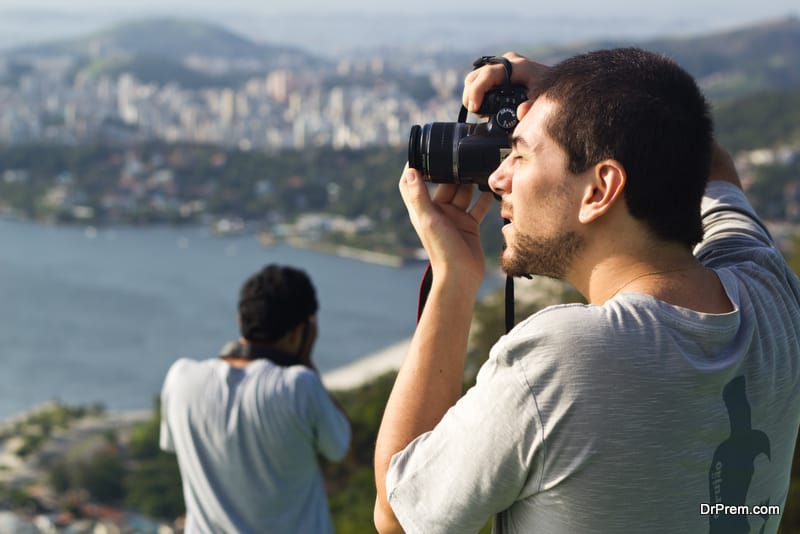
The most important component of photographic tourism revolves around the human element that functions behind the camera. The photographer himself is a key component. You need to have the right kind of ‘eye’ or in other words a perceptive vision that enables you to view your subject and whatever stands beyond.
The image is a just an outline of the object as focused through the length abiding by the laws of physics. This is the mathematical aspect of photography. It is factual and straight. Beyond this there lies the aesthetic aspect of photography where the tourist photographer needs his subtle artistic sense to feel the pulse of his subject.
This is where life is infused in the snapshots making the photos vibrant and meaningful. For example, a beautiful lake is the subject. It is factual and has certain dimensions. However, capturing this amazing feature of nature in the backdrop of sunset or sunrise is purely the photographer’s discretion which makes the shot so different from the rest, and this is one essential and a very basic component of photographic tourism that puts life in your creation.
The second most important component of photographic tourism is the subject who stands as the cynosure of discussion inviting a flow opinions when exposed to the public be it through internet social networking, gallery exhibition or photographic albums. The sequence of organizing the snap shots is equally important as they exhibit briefly your entire tour itinerary.
It makes your photography meaningful placed against the backdrop of your visits to different places. The weather and climatic factors are not to be overlooked as they are very crucial components, which can enhance the quality of the picture or can spoil it. Mt. Kanchenjunga is no less than a glimpse of heaven under a sunny blue sheet overhead that spans from November to mid-May.
This divine glory on earth is pathetically lost behind heavy drenching gray sheets of downpour if visited in a wrong time. All you get is a hazy blur through your lens. The season that you choose for a photography tour is a deciding factor and is indeed a vital component of photographic tourism.
Your passion for photography is a quality in you that finds expression whenever you set out with your camera as an important part of your luggage. However, the emphasis may shift from subject to subject. You may be a specialist on sea waves or you may have a strong penchant for distant snowcapped peaks for that matter.
You may pace up and down for kilometers across the ruins of an ancient civilization like Nineveh in Northern Iraq or among the dust and rubbles of Mohenjo-Daro in Pakistan with your roving eyes hunting for a subject, an artifact or a figurine worth capturing in your lens. These individual subjects and their images become essential components of photography tourism .The creative value of these specific shots are often appraised by connoisseurs showing an intense weakness for the specific subject.
The camera, film quality and the standard of film processing and development are certainly the foundation blocks of photographic tourism. Needless to say, they constitute the chief components of photographic tourism. If you go for a digicam, you need not worry about the film development.
The digitized photo finishing tool is inbuilt in the cam. Off course, the camera is only the mechanical component of the entire cycle. The real elegance and finesse of the art that imparts life to the photo rest on the fingers that click the button and the eyes that view the subject through the lens.
Key drivers of photography tourism
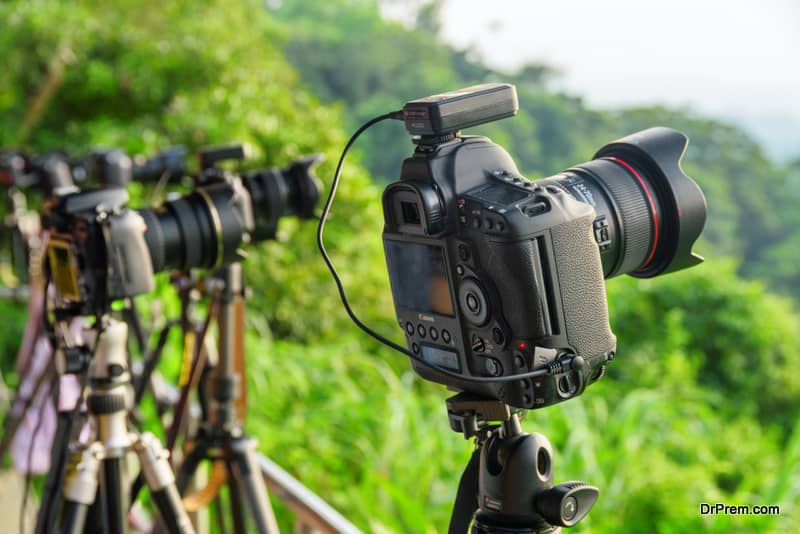
Photography tourism is driven by a strong impetus to express the creative side of the photographer tourist. The wonderful visual charms and the magic spell cast by a dynamic sheet of the blue ocean against the backdrop of a brilliant sun fires a rare kind of satisfaction to the photographer tourist who captures these exquisite shades of pink, azure and crimson grey through his lens.
It is comparable with the kick of gratification a landscape artist derives staring at and absorbing every bit of his creation that has made the canvas a gorgeous exhibit! This self-appraisal and immense satisfaction drawn breed fresh inspiration.
This is a key driving force that inspires the tourist to grab his camera once again and set out in quest of fresh pastures worthy of a shoot. Since photography is a strong visual media, it has enough power to promote tourist appeal a distant land may hold. It is not the pseudo hype that a carefully framed statement with a touch of a little marketing exercise would lead.
This stuff is far more than that and is an instant hit depending upon how well that tourist photographer has done his job in capturing the hypnotizing enchantment of a valley adorned with flower or perhaps a rolling pasture land with flocks of sheep grazing. You are fascinated by the photo and feel like booking the next flight to reach this fairyland!
The key factors of photographic tourism are not just confined to the landscape beauty and outdoor shoots drawing more crowds. The support infrastructures like the hotel accommodations, home stay cottages and favorite haunts like eateries and pubs which the crowd look for also find a place in the photographer’s captures. These are transmitted fast as important sources of information passing over to the world motivating tourists at large to pack and take a step forward to arrive at their dream destination.
The socio-cultural displays and craftsmanship of the local folks serve as a powerful key driver stirring photographic tourism. Particularly, the tribal dances exhibited by the tribal folk in different corners of the globe are simply enthralling. For that matter, the traditional dance performed by the Masai’s of the East African Serengeti plains is well worth a shoot! The tribal craftsmanship constituting exquisite pieces of art may trigger a strong drive to draw tourists thousand miles away to capture a snapshot of these decorative pieces and immortalize them in celluloid for the world to see with an appreciative gaze.
The heritage monuments, pyramids, shrine, ruins and rubbles from ancient civilizations have a special appeal for the photographer tourist with an archeological bend of mind. Camera wielding tourists having an acute interest in the laws of mathematics, civil engineering and astronomy might be seen flocking around the Leaning Tower of Pisa, the Egyptian and Mayan pyramids with a kind of obsession and a spark of interest glinting in his eyes.
It does not come as a surprise if these tourists are caught taking photographs of these legendary structures from all possible angles selecting different time slots in a day. It is quite possible they are driven by a fiery passion in order to propound a new explanation to the laws of physics and gravity, backed by new records captured and revealed by his array of photographic shots of the subject.
Finally, the various photography competitions held across the globe add fuel to the photography passion of tourists, and various television channels telecasting some wonderful video recordings and gorgeous photo clips encourages the diehard travelers to experiment more with the lens ultimately bringing in home some financial gains as well.
Importance of planning in photography tourism

You can never move an inch ahead without having a concrete plan to back you up in your photo tourism ventures. You need planning in every step right from your choice of location, your photography kit including your preference for the type of films, the company that you would like to be in your photographic tour and lastly the choice of the season you want to travel to capture the beauty of nature in its full bloom and color .
Planning photographic tourism starts with setting up a direction before launching upon a trip to a distant land. The important issue is what exactly you are looking for. The preference shifts from one photographer to the other. Not all kinds of natural beauties are like to catch the fancy of the photo tourist to same degree. Some may get enchanted by the magic of the lofty snow-capped mountains, and for some no sight can be as great as a rumbling waterfall coming down through a sheer drop of hundreds of meters against a glorious backdrop of the setting sun.
There are certainly departures from the usual settings like some photographers may be obsessed by the magnificence of TajMahal or Eifel Tower for that matter. There are photographers whose likings may be quite unusual like clicking shots of marine flora and fauna. Snorkelling in the waters of the Great Barrier Reef would provide an ideal tourist spot in that case. As the emphasis for a specific spot shifts, the type camera is to be matched accordingly to suit the specific requirement.
In case you are going to take shots of the distant mountain ranges, your camera must have enough zooming focus. Tripods are great for capturing the brilliance of a sun rise or a sunset. For shooting underwater photography, specially designed cameras should be used keeping the fact in mind that saline water does not seep in and spoil your kit.
The global climatic conditions are varied. It takes an altogether different approach to study the difference in latitude as well. Expecting a sunny climate, a French tourist may face a nasty surprise in Down Under where photo shooting efforts end in a disappointing note finding the place bathed in a month long heavy drenching sheets. When it is a sunny weather in France, the Aussie land is frustratingly wet.
A careful survey of the weather conditions of the destination you have in mind for photographic tourism is to be done. Let not the changing mood of the climate spoil your experiment with your camera. Let not the heavy downpour force you pack your camera while on a tour with grand photo shooting schemes in your mind. You will be practically bored to death.
On the other way round, you may be a specialist on the dark skies against a rural landscape. When and where you may find such a tempting subject is a million dollar question. You need to work hard to find the right place and the right time for realizing your photographic dream.
Always plan to take your camera user manual on your tour. You cannot say when you may need it. You will repent in case you do not find it when required. Needless to say, you need to do enough homework to take sufficient memory chips. You make even go a step ahead to carry your laptop for instant uploads and preserve your precious clicks forever.
Good planning results in a successful photographic tourism. The outcomes are dramatic, and the amazing images are captured exactly as you wanted them to be. Your planning pays off, and your photos augment the quality of your collection.
Preparations before going for photography tourism

Before going for photographic tourism, one must be aware of the local customs and practices. There are many amazing touring destinations around the world where taking photos of local inhabitants, temples and shrines or a traditional ritual would invite public resentment. Here, it is wise to show respect for what is a taboo and keep your camera locked.
However, you may always make a request and seek permission beforehand from the competent authority if you really feel your trip would lose half its spirit by not taking a photo, which you so much crave for. This will not cost you more than a few polite mails and words of requests.
You need to decide whether to use a digicam, a DSLR or a film supported camera. If you are going to take a large number of shots, it is wise to take a digicam as it will save you enormous film processing and film development costs associated with a film supported one. The initial investment on a digicam is a bit high, but with a large number of photos shot the cost graph steadily goes on a downward slope. On an economic scale, we may put it this way!
If you are off to a mountainous tour destination like Nepal, Tibet or Darjeeling or Kumaon in India, which gives you an access to view the legendary world famous and awe-inspiringsnow-capped summits like Mt Everest, Mt Kanchenjunga and Mt Nanda Devi, take a camera with a high zooming power. These chains of mountain peaks stand at a great distance, and you certainly need to bring the image closer to catch the finer details like crevices and cracks distinct throbbing with life!
You should plan to take with you a sufficient stock of film and batteries. Countries having a low climatic temperature eat into your battery life faster. Needless to say, you should guard your camera properly so that the lens does not get a scratch! Guard the lens with a cover and carry delicate pieces of cloth for careful cleaning of the lens.
One important factor to be borne in mind is the weather conditions of the tour destination. Heavy downpour is a major hurdle for good photograph. Your endeavor with your camera is lost in the haze of heavy drenching sheets. Whatever may be the character of the landscape or a seaside resort, heavy rain will mar the spirit of photography. So try to avoid photographic tourism in the rain and wait for a bright sunny season.
If you are carrying a tripod, see that they come handy and neatly fit into your luggage pack. You may opt for mini tripods as they do not lend an additional weight to your luggage. They are actually depending upon the kind of photography you are going to take. They are ideal for shots of sunrise and rolling waterfalls.
If you are carrying a DSLR camera on a photographic tourism, check that the camera and its parts are tightly packed. You may get a padded case having separate sections to fit in the different kinds of lens and keep them in place tight and safe. Else they may get damaged while hurrying towards airport or boarding a transport. Check the functioning of your camera and battery charger well ahead of your trip. You may need to spend a little bit on replacement of parts, which should be factored in while preparing for photographic tourism.
Implementation of best practices in photography tourism
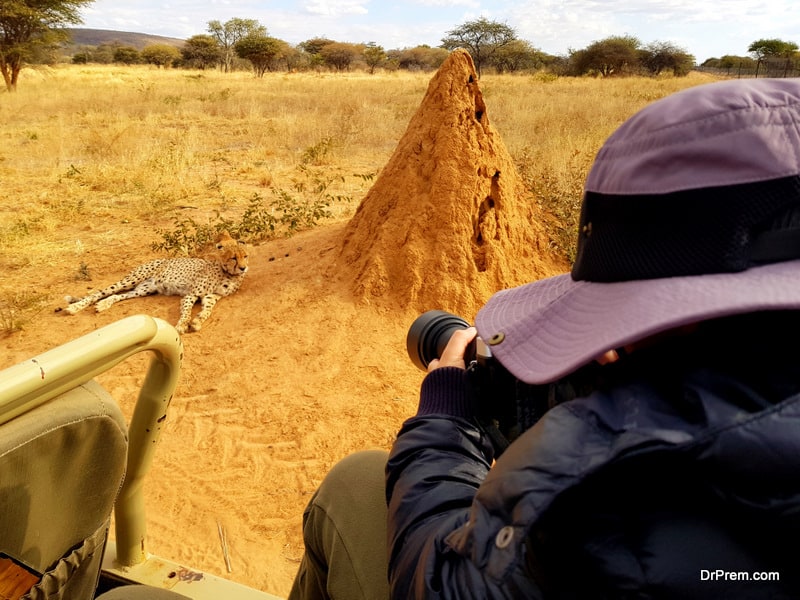
Photography tourism does not imply random shots taken on random visits to tourist destinations. It involves exercising your thought process a bit and designing an itinerary which brings in mindboggling success to tourism and the element of photography associated with it. Tours are to be deliberated keeping the object of photography in mind.
You need to devote the best time and opportunity to visit your dream destination. Being in the right place and wielding your photography kit at the right time is significant. Make most of the setting where the photographic opportunity is available for who knows the sunny sky you have overhead this moment might be spoiled by dark and gathering clouds moments later!
The photographic kit to be carried to the tour destination needs to be handled with utmost care and caution. If you are carrying a tripod, be informed that it adds on extra weight to your luggage. Tripods are great when taking shots of the sunset and sunrise and therefore form an essential accompaniment. Ensure the gadget is built out of light material. Enough films should be taken in case you run out of stock.
The same principle holds with the batteries as their life span is often unpredictable. However, if you are carrying a digital or a DSLR you need not worry about film inventory. Proper prudence should be observed for maintenance of your kit, especially the lens. Keep soft linen for cleaning the camera lens, and see that they don’t suffer a scratch mark while cleaning .Likewise, the lens should be protected against dust storms.
It is not fair to take snap of anything that comes in your way while you move along your tour destination. Seek permission from the concerned authorities prior to taking shots of temples, shrines, monasteries, people, cultural festivals and local rituals. Mindless shots directed at sacred places may not be entertained.
A well-planned photographic tour searching for specific subjects is a great way to sharpen your photographic talent. Whether you are a professional or a novice hardly matters as there is always room to improve your existing set of skills.
In photography tourism, the choice of the tourist destination and the accompanying group are important factors. The place holds the beauty and enchantment your camera lens is looking for. The right company you move with can be valuable for exchanging views regarding angles, intensity of images, background light and other finer details.
It is quite likely that you are ready to take a shot and the crowd gets in front of your lens in a cluster, blocking your view. Hold on to your patience, and wait till the crowd gets dispersed enabling you a free access view.
Good and attractive photographs should not be clicked in a rush. If you find any special subject worthy of clicking, break away from your group and look for a serene environment in order to concentrate on your subject. The right timings for a sunrise and sunset along with all the brilliant glory that paints the sky gorgeous should never be missed.
Last but not the least you should train your eyes beyond what the lens sees. The camera takes in the image as it passes in through the lens. But your photographic skills should able to put in a bit of life in what the lens just sees. Here lies your brilliance that makes your creation a cut above the rest!
Precautions in photography tourism
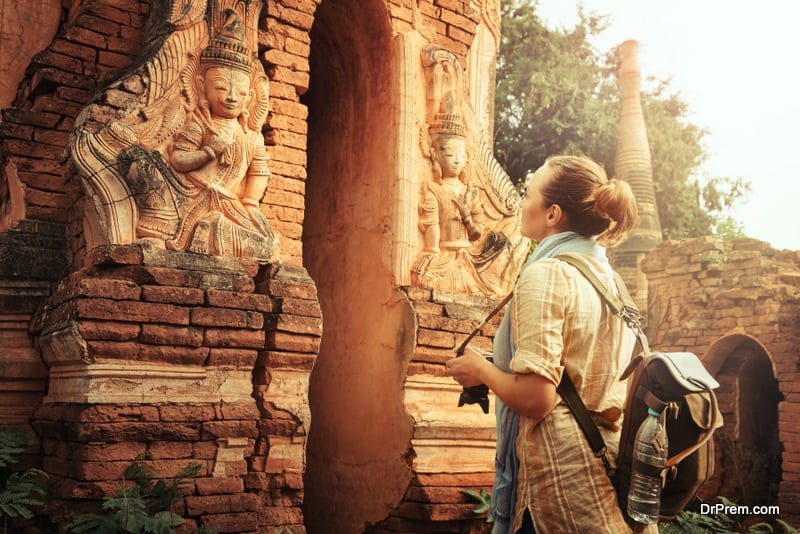
The first thing to be borne in mind while on photographic tourism is that you must have respect for your subject, especially when taking photo shots of places of worship, ritual gatherings and sacred landmarks. You need to keep your senses alert to find out if others are taking snaps. The locals may show resentment as photography in general may be banned in these places. It is always wise to seek permission before clicking the shutter.
Photography is a very sensitive issue while passing in and out of any foreign country. Carrying photographs of landmarks like military installations are prohibited. One should expect a tight security search to ensure that you are not carrying photographs of a place of strategic importance from the angle of the country’s security issue.
As a precautionary measure, passengers at an airport are advised to take photographic films in their main luggage instead of hand luggage, which is more vulnerable to a security search. Specific request can be made to the airport authority for making prior programs for allowing photographers to carry professional films of ISO 8OO and up.
Extreme temperature conditions may damage your camera or its accessories. A very low temperature will reduce the battery life of your camera. On the other extreme, a very hot climate will harm your stock of batteries and films as well. It is wise to carry enough battery and films so that you do not have an unusable stock to shock you, when you have an opportunity to take photographic shot of a panoramic valley. Check the memory capacity of your cam and carry extra 1-2 memory chips so that you can take enough shots.
The camera kit should be safely packed making them damage proof against external and internal contacts. Lining the cases with soft padding would be ideal. When carrying multiple lenses, make provision for separate chambered casing with additional buffer linings. If you allow all the lenses to cram together, you will get a handful of shards instead of intact lenses. Carry pieces of linen to clean them, and be cautious not to leave a scratch. Carrying lens mopping liquid and timely application on the lenses would keep them tidy for flawless viewing.
Camera kits are quite expensive, and it is advised to take proper care so that they do not get robbed specially while moving in a crowd. There is a fair possibility of burglars stalking you. Once they get a chance, you lose your favorite camera. The same word of caution applies when you are in a deserted alley or in a back street. Never put your camera kit out on a public display. You may be inviting thugs.
Natural events like heavy downpour, dust storms and blizzards are potential threats to your camera. Keep them packed in waterproof and dust proof cases in order to avoid damage. In case you need a repair, your multilingual camera operating manual will help you in troubleshooting. The technician at the repair shop in your tour destination may not understand your language.
Dos and don’ts of photography tourism
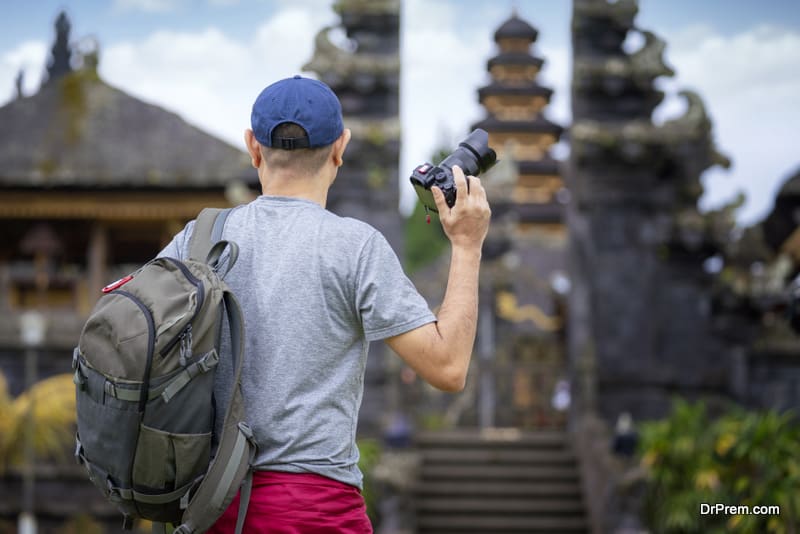
There are certain important rules one should abide by while taking his camera to a tourist destination. These regulations are however guided by the geographical character, cultural practices, local crowd and the customs and beliefs that rule. When the enchanting plateau of Tibet or the mystic flavour of the country is your target destination, you need to watch out for the local sentiments before clicking for your camera shutters.
In religious countries like Tibet, Thailand, or Myanmar photography inside monasteries and Buddhist temples are prohibited. If you click for photography, you are inviting resentment of the temple authority and the locals as well. Consequently, your photography gadget may be seized and a heavy fine may be imposed upon you. You may be subject to open jeer leading to embarrassment. On similar grounds, shooting pictures of monks and nuns is a banned activity.
In India, mainly in certain Hindu temples there are restrictions imposed upon taking inside anything made of leather. Many camera cases and holders are leather made. Therefore, it is thus advisable that you follow these rules not making your tour a bitter experience landing you in a troubled state. It is quite a possibility the same restrictive rules may apply when you draw your camera in the hope of shooting priceless pictures of artifacts and sun god inside the Mayan pyramids preserved as a relic bringing flashbacks of their cult of human sacrifice.
If you have a hot sun burning overhead, exposing your stock of films and your camera kit can well be damaging. You may be quite at a safe side with the latest digicams or high tech DSLR models.
Never expose your camera to a strong windy weather condition as this will have an adverse impact on your gadget, and by the same logic dust and sand storms may damage your lens. A drastic fall in temperature may well be destructive for your photography tourism. Check whether your lenses are well suited to stand all sorts of weather conditions. If you are planning to visit Tibet to click some great photography, it is advised you do it in the months of September and October. The quality of your photography will have a magic touch.
A lot depends on the number of photo shoots you have planned to take. Digicam has a cost advantage over film fed cameras despite the high initial cost of the instrument if you are going for a large number of photo shoots. Film fed cameras have low initial instrument cost, but the cost of films and development charges escalate with the rise in the number of shots taken.
While visiting places having a low temperature, you need to bring extra stock of batteries because chillier the climate, shorter is the life span of the batteries. If you look for excellent quality photos, you may make that extra effort of carrying a tripod and flash attachments. Your efforts are definitely going to pay off. When on a visit to a land situated on a plateau you may be exposed to harmful ultra violet rays. Filters may be kept before the lens in order to get the distant vision distinct.
Carry the maintenance kits like dust cover, lens hood, tissue, brush and cleaners if you are out for a long trip. This will be an added advantage as well to attend your camera in case the strain of touring falls heavy on your delicate instrument. However, photography apparatus should be light enough to facilitate easy movement. In many countries, the local are driven by a belief that it is inauspicious to be photographed. Respect their belief in that case. Do not insist on taking photo shots. You may be adding fuel to fire and spark off their wrath!
Things to do post photography tourism

The photography tourism does not culminate in taking photography employing your most brilliant perception of the tricks of light and shade, color contrast, depth and quality of the image and the angular shots that you have clicked with meticulous precision. Photographic tourism neither ends with the exercise of developing those exquisitely shot films as much remains to be done post photographic tourism and it is as interesting as the tour itself and important too .
The next step that is to follow is what do you do with your prized possession? They have just seen the light of the day and it should be kept in mind they are a powerful medium of expression. They have been hard evidence of your sense of artistic beauty trapped either in celluloid or microchips, and they give access to perhaps a trillion pair of eyes wide with appreciation upon being exposed to the incomparable beauty of places and landscapes that you had been to but they have not.
The powerful appeal of the tourist destination spreads like wildfire via these bright images in no time making the place a hot favorite destination for tourists. There are several exciting procedures of preserving your cherished photographs and make them public. One trendy way to do it is to use a digicam for the shots and directly upload the photos in the social networking sites or net albums.
The internet offers an amazing highway where you use this electronic facility and post your photos for the world to see. You can interact with the world publishing photos on the web which is bound to draw special attention. Your pictures reach the destination at an electronic speed.
Not only this, there are spaces for posts and comments at the base of the photos where viewers can post their opinions and comments. This is something wonderful and constructive and gives you an immense satisfaction about the tourist destination you had been to and your talent in photography. Adverse criticism gives you a reason for improvement on your expertise behind the lens.
You may opt to develop your films into photographs if you have used a film based camera. You may organize them in photo albums. Whenever you feel like having a flashback on the tourist destination you have visited, you can rummage through the photo album livening up the memory of your tour.
You may always share your moments of delight inviting your friends to have a thorough look into your photo album. Who knows your friend may decide to set his foot on the beautiful destination that he might be glancing through the album pages with intense ardour.
You may even go for a large-scale promotion of your photography feats and always choose to organize an exhibition of your tour photographs. The gallery would be adorned with brilliant exhibits. The theme of the exhibit is focused around your fiery passion for touring confining the beauty of nature within the frame of your camera. The live comments from critiques will leave you thrilled. The criticism may not be always positive, but you need to live with reality and strive for improvement.
The realization strikes you that after photography tourism done that there is so much to organize further down to make your tour bright snippets of sweet memories. There is another amazing way to showcase your activities in motion if you have a movie camera and do a bit more to cast your ‘catches’ in the internet You Tube. This is a novel way of exhibiting your prized moments while you were on a tour for the world to see.
Top destinations for photography tourism
The statement that this world is god’s canvas painted in an astounding mix of colors, landscapes, ravines and greenery makes much sense. It is just hard to choose a place from the other that would lure you with your photography kit in a quest to capture the nature’s beauties with a motive of permanent preservation. Here I have tried to list down top ten destinations, which would easily become a photographers dream, turning him on, loading his camera and accessories setting out in quest of these enchanting places of unparalleled beauty.
Iceland

The striking features of this pollution free and a near virgin land located up in the north are its low population density, clean atmosphere, ambient and unspoiled settling and mild temperature. These factors have a combined impact on the overall scenic beauty, and a spell of picturesque charm cast by this amazing land has turned it into a photographer’s paradise. The landscapes are stunning blessed with a number of waterfalls which keep rolling and rumbling echoing off the surrounding mountains of majestic view.
The entire scenery holds the photographer enchanted and gives him a feel that if there exists a paradise on earth it is this and his camera goes on nonstop clicking!
British Isles
The chain of the British Isles ranges from the mystifying beauty of the Scottish Highlands to the charming setting of the Lake District .The British Isles has some of the most varied landscapes in the world that captivates a photographer. The amazing mix of flora and fauna and a large spread of greenery make this tourist destination an ideal subject on nature photography.
China:

China offers a diverse character in its breath-taking landscapes, which presents outstanding photographic opportunities. One scenic spot literally competes with the other to be framed inside the photographer’s lens. Great view of the legendary Wall of China, the magic of granite mountains of Huangshan located in the Anhui province of eastern China, the bustling city of Shanghai with its stunning modernity are sites too excellent to be any photographers prized collections.
The snowcapped majestic mountains to the south west, the amazing view of the deep valleys cut along by flowing rivers and the vast expanse of green steppes will take a photographer’s breath away! You place your eye in the view finder, push your shutters and the surrounding scenery will do the rest! You have in your collection priceless gem of photography.
Banff:
Banff has a splendid setting amid the picturesque Canadian Rocky Mountains, and is a destination a photographer would die for. Its exceptional features are the glaciers. Situated by the banks of Lake Moraine, the Banff National Park boasts of a fabulous combination of flora and fauna, a lure strong enough to keep a tourist busy on his camera shots the whole day.
It is famous for its still aquamarine waters catching brilliant reflections of the blue overhead and the lush green vegetation along its banks. Banff beckons photographers from all corners of the globe and the latter jumps with their cameras with a cheerful response.
Peru:

Perched in the mountainous terrain of the magnificent Andes Peru is a perfect destination for stellar photography. The land inspiring the renowned Inca civilization, it is this heavenly abode where fabled gold treasure trove was said to have been existed. The mountains are shrouded in enigma presenting a brilliant image for photographic ventures.
The legendary site of Machu Pichu is just one among many panoramic spots well worth a photo shot. There is the Colca Canyon which almost doubles the depth of Grand Canyon. The country is fringed with forts and awe-inspiring sun temples whereas history puts it is believed to be the grounds for human sacrifice. Specially, the temples of Chan Chan are truly arresting and a venture to Peru remains incomplete without some memorable shots of this colorful land.
Morocco:
Morocco is a typical bedouin country with its magical expanse of the Saharan desert, the picturesque sand dunes and enchanting green isolations of Oasis in the desert country offering excellent photographic opportunities. The streets and alleys present an exotic appeal and is a hub of bustling activities.
The thick aroma of kebabs being cooked, vendors shouting and selling exquisite decorative artifacts, tune of ‘azans over towering mosque minarets all conjure up a live atmosphere, and the tourist cannot help but click his camera shutters. Morocco is full of color pulsating with life with high mountain range of Atlas at the backdrop.The spectacular Draa valley is located south of the Atlas chain and abounds in palm groves. It’s all wonderful and captivating beauty fits into every description of a dream destination of the photographer tourist.
No words of appreciation would do enough justice to the 150 meters tall Erg Chebbi sand dunes that a bright photo shot. This marvel of nature shoots up and slumps down in an undulating landscape with the Sahara working the wonders, a photographers delight indeed!
Pyrenees

The Pyrenees form a massive land barrier between France and Spain and is a testimony to a variety of gorgeous villages and town set up centuries back. Lush valleys and glacier fed lakes bring the scenery close to divine beauty. The Alpine landscape is mystifying and stunning. Photo shots of the surrounding landscape speak volumes of its unchallenged view in terms of beauty. This European Alpine landscape is a gem of a destination prized for photography.
Bolivia
In terms of altitude and isolation, no country can beat Bolivia. Popularly nicknamed as the Tibet of America, this country is noted for its vast expanse of salt flats of Uyuni , which is a natural mirror reflecting the image of the sky overhead, and is a much sought after subject of landscape photography . Lake Titicaca and its surrounding Andean cast a magical spell, and the ancient Inca city of Tiwanaku is a pure beauty and photographer’s target world over.
Tasmania:

One third of this island down under off the coast of south east Australia is covered by Wild Life reserves and National parks. The flora and fauna have a somewhat alien air that prompts the tourist take position wielding his photography kit.
The landscapes have a romantic touch, the rain forests lush and unspoiled, and the coastline exquisite washed by the blue sea presenting a mix of enchantment giving you a feel this is the place you were looking for your photo shoot. There is an opportunity of indulging in the outdoor sport of hiking as well. You feel like capturing the entire spot inside the lens.
Yosemite:
The picture of Yosemite brings forth enormous sequoia groves shooting up into the sky through an astounding length. The land is scattered with splendid geysers, hot springs and granite rocks. Yosemite boasts of a tranquil environment and is visited by a huge influx of tourists every year. It is a picture-perfect site and provides the tourists with a lot of photographic scopes.
The above ten destinations are a just a few among thousands that worth taking your camera to.


